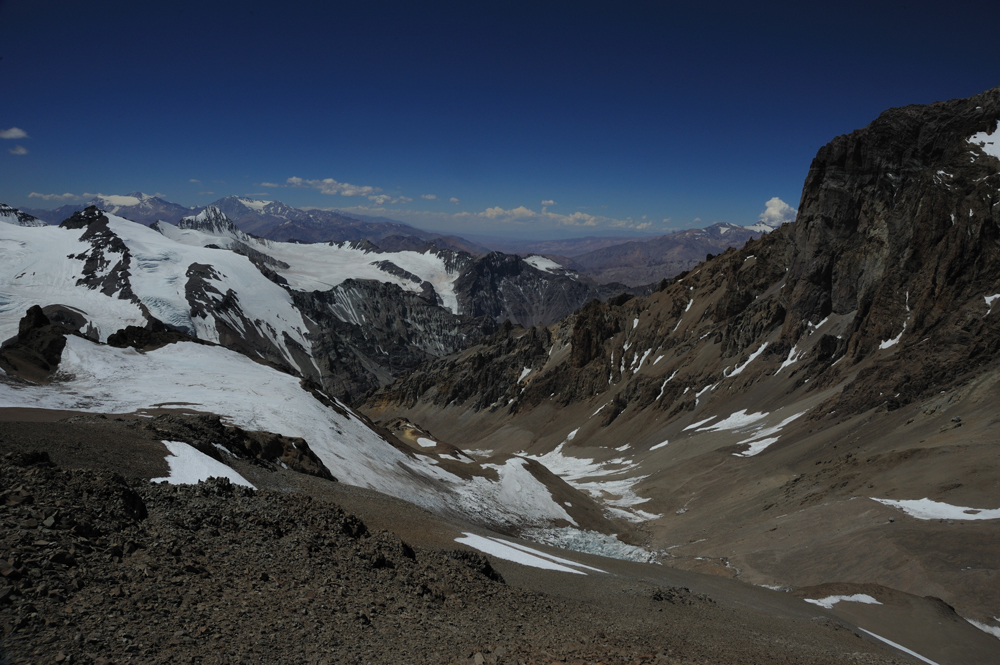
Aconcagua. Start
Aconcagua. Puento del Lenas
Aconcagua. Casa de Piedra
Aconcagua. Base camp. Plaza Argentina
Aconcagua. Camp One. Cargo drop
Aconcagua. Camp One
December 25
Christmas. All normal people dance around the Christmas trees, hug Santa Clause, unpack presents, and consume geese and turkeys in the bosom of their families. We are making cargo drop to the next camp. This one has not the only number but a name also, Guanaco. It named after the nearby glacier, and the glacier after the animal that actually never come so high in this region. It locates at 5500 metres, so we need to gain 500 metres. It takes 7.5 km one way. We need to go through the pass from the eastern to the northern side of the mountain.
Gps-track (green triangle – summit):
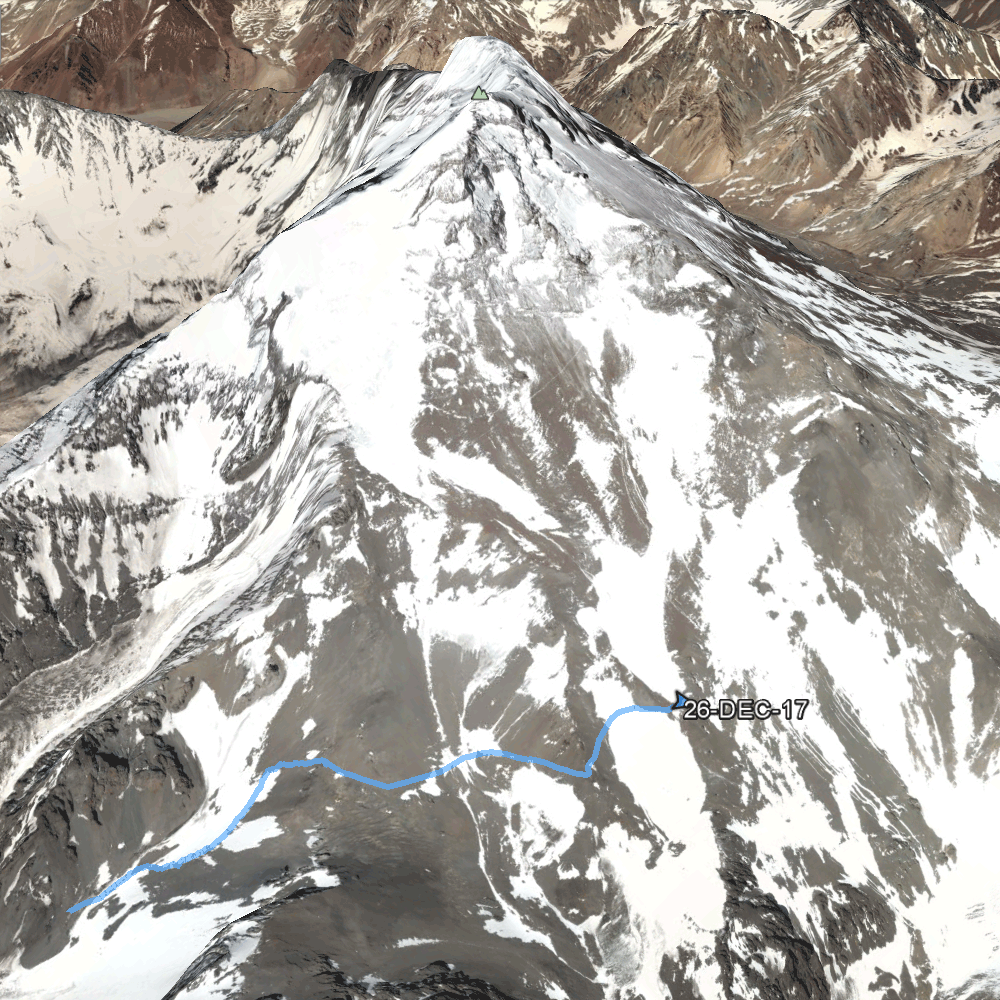
In the morning, we checked oxygen content in our blood just for curiosity (we had our own oximeter). Mine – 91%, Peers – 88%. It’s better compare to the base camp results (88 and 85 correspondingly), our organism produces more erythrocytes. It’s a pretty good percentage for such elevation.
Breakfast, packing and start.
The first part of our way is a steep ascent to the pass. Here we gained 360 metres, it’s two-thirds of our today’s elevation gain.
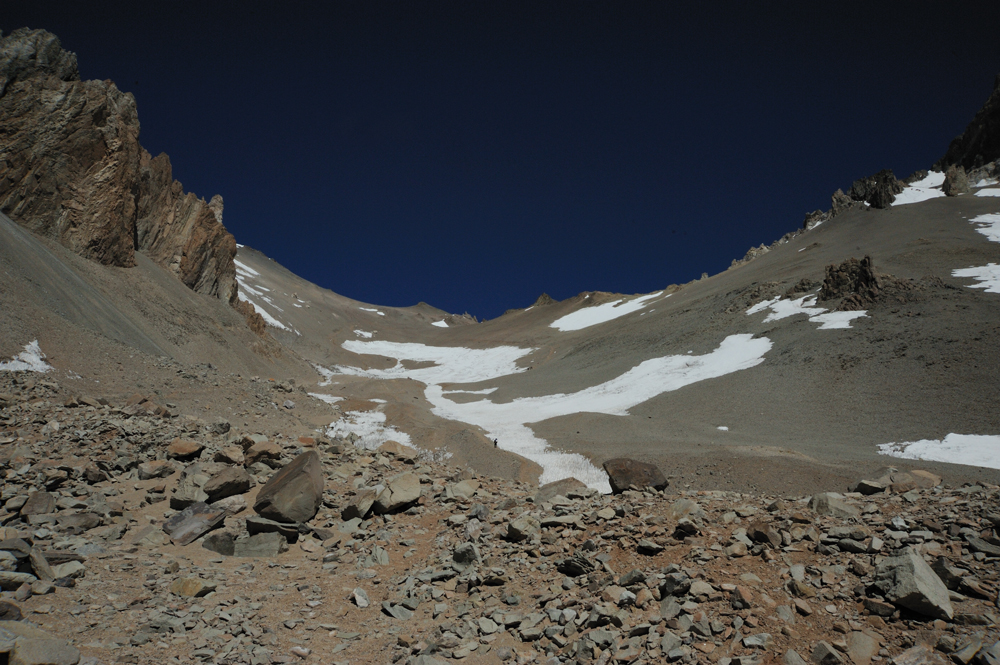
Fields of penitentes along with the spring.
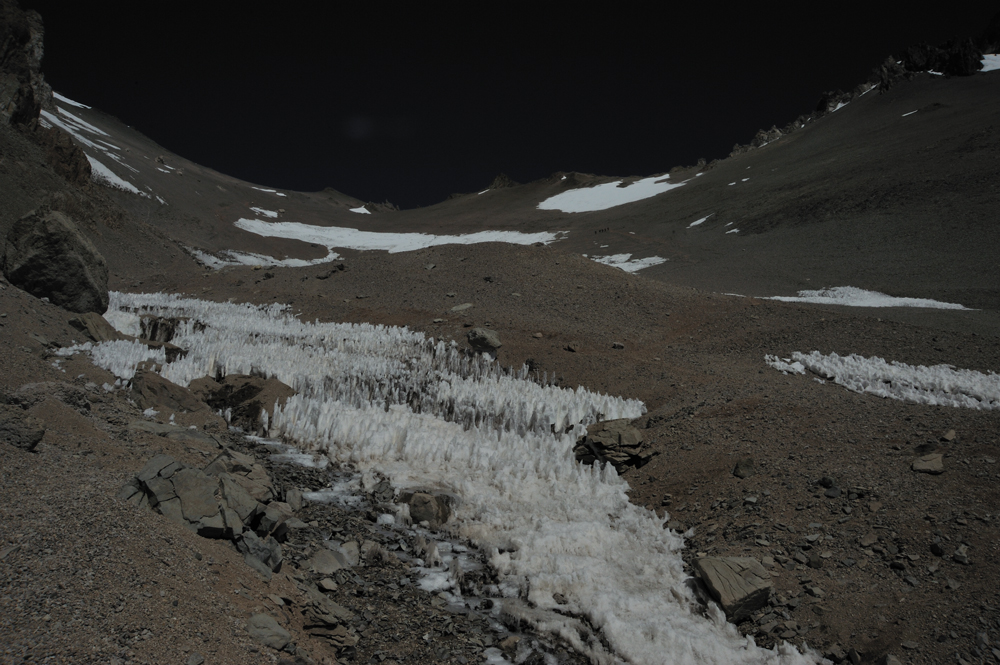
Tents below – Camp One.
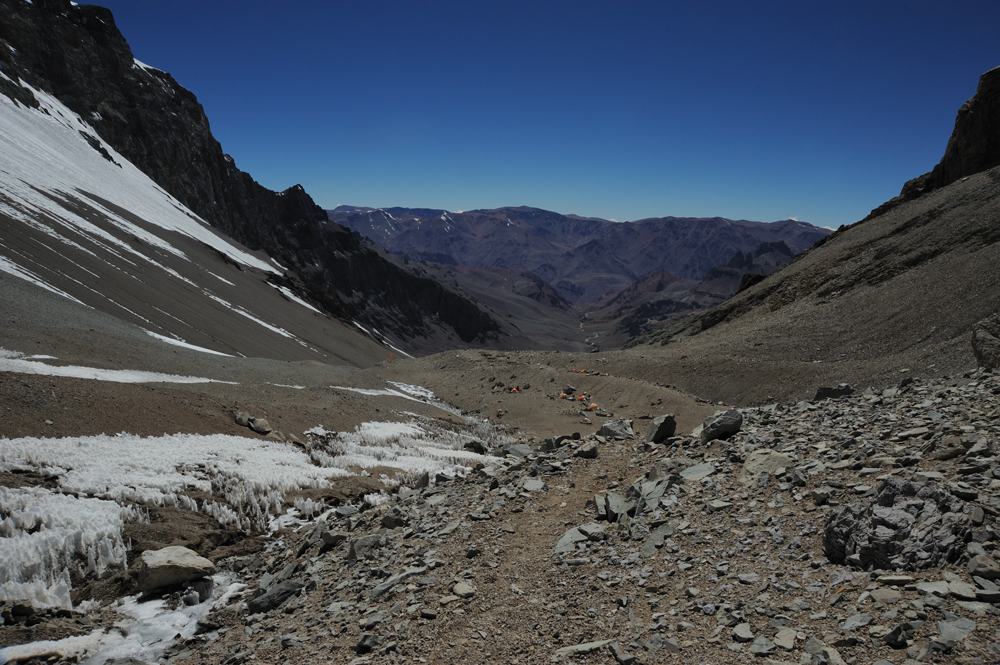
rest
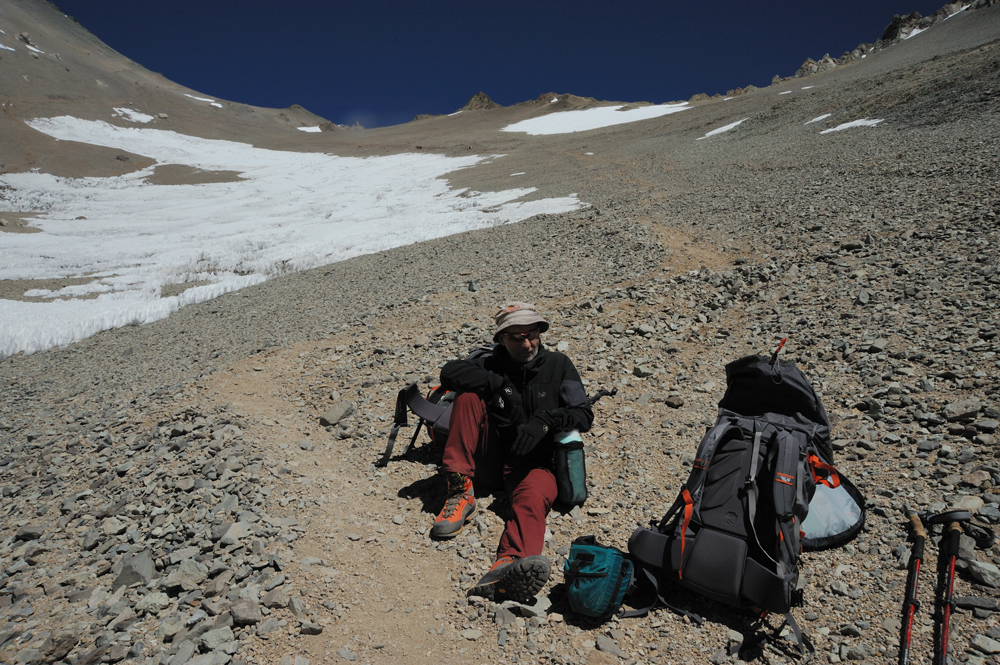
view around
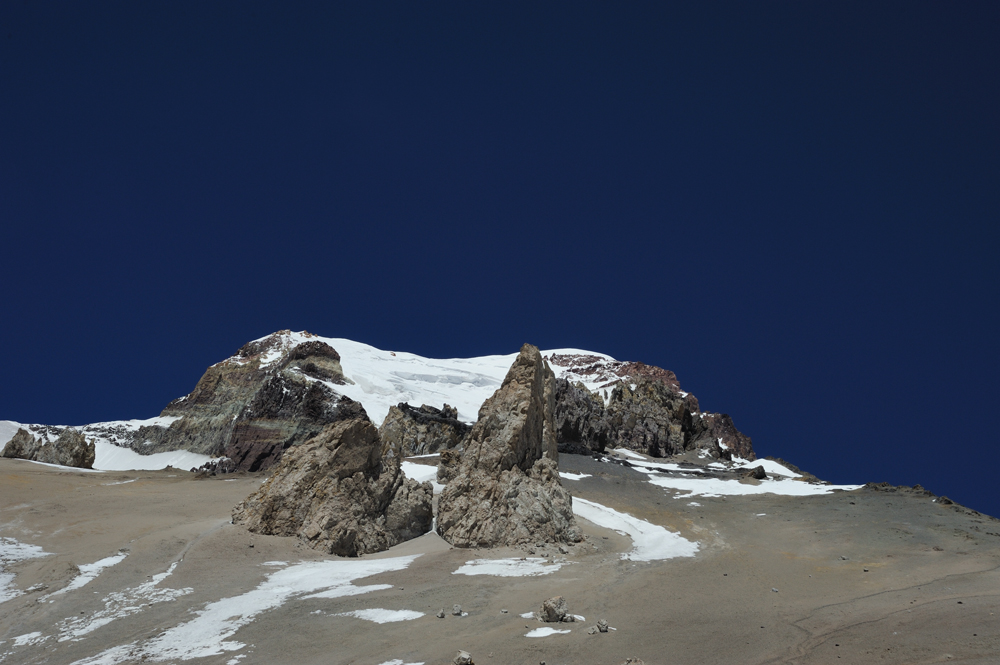
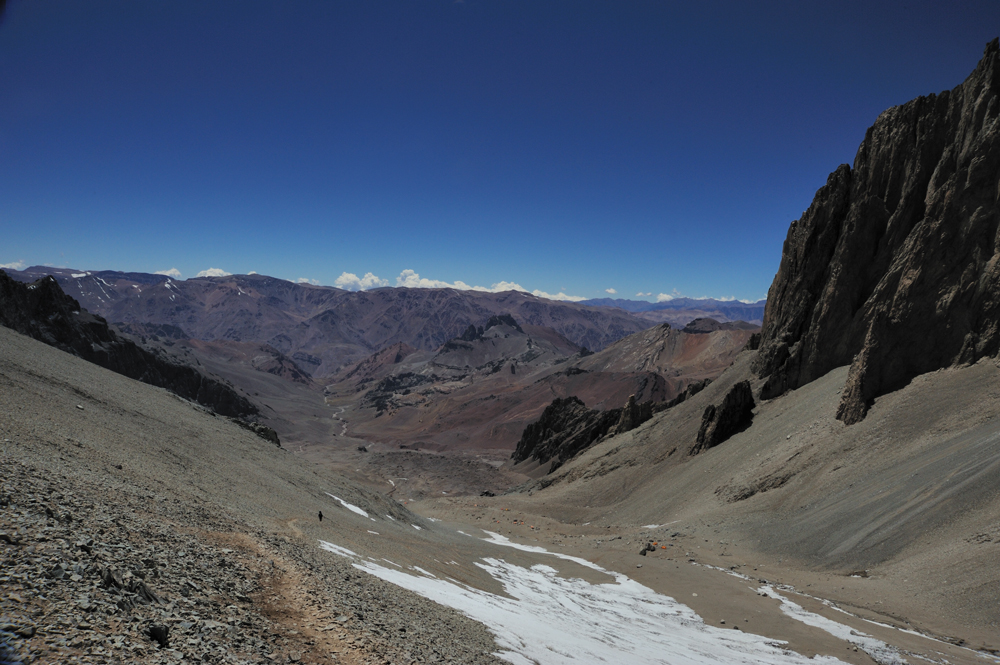
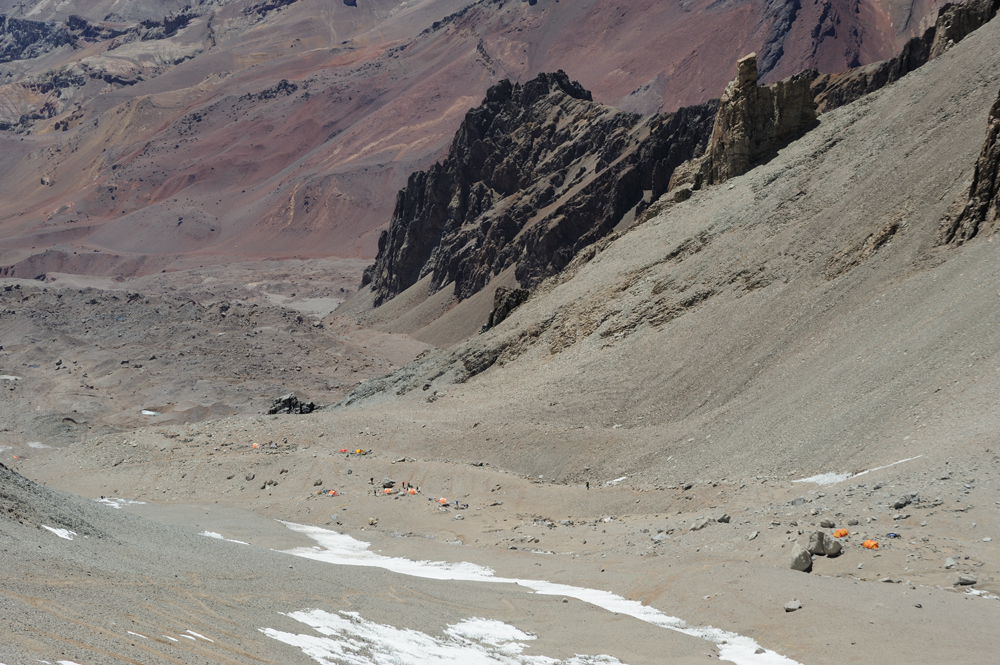
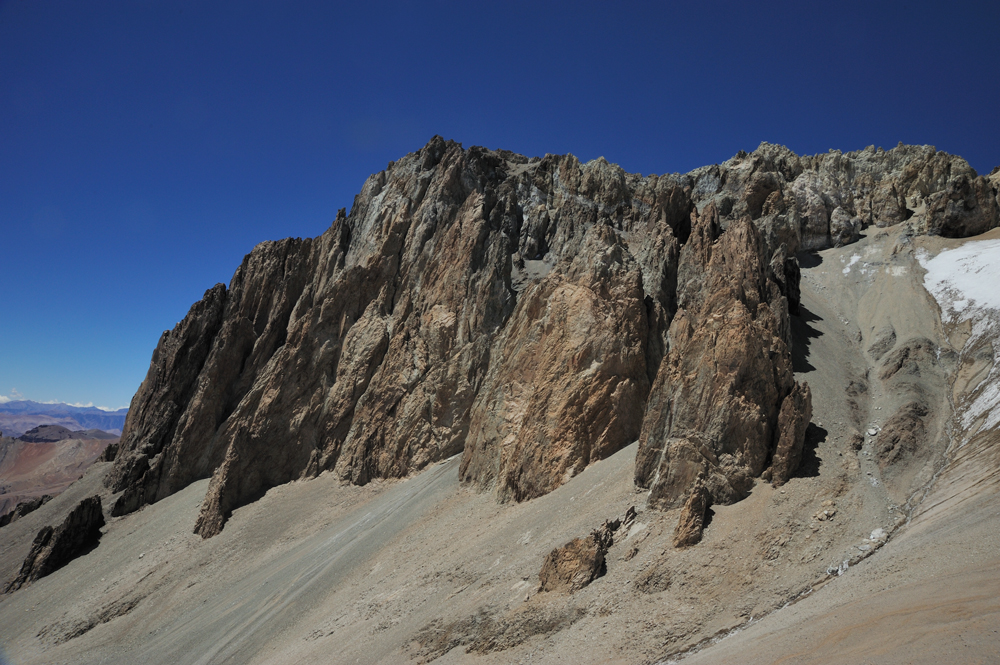
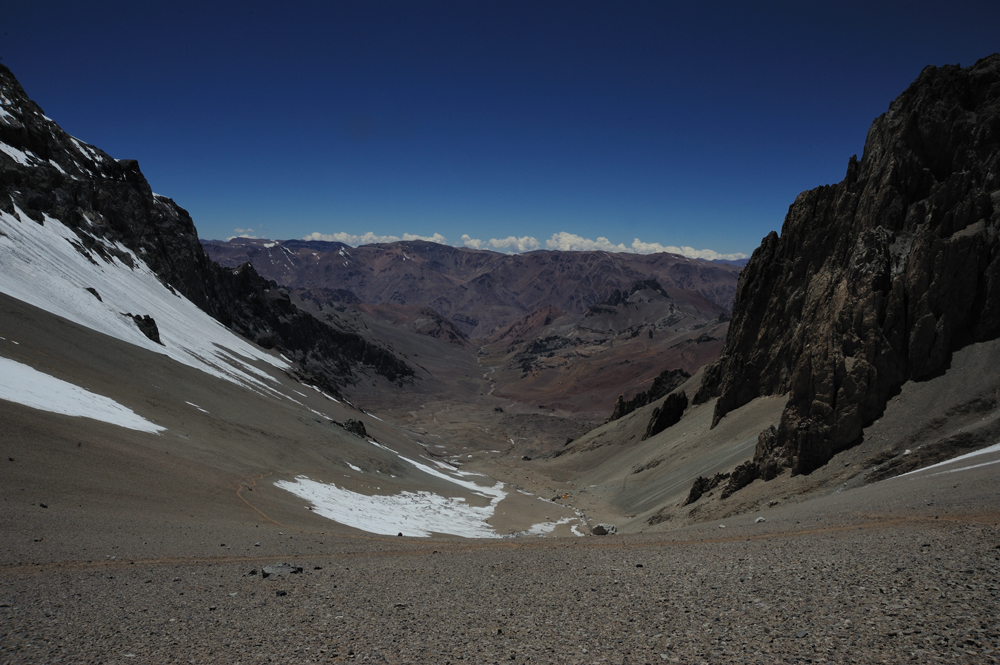
The pass.
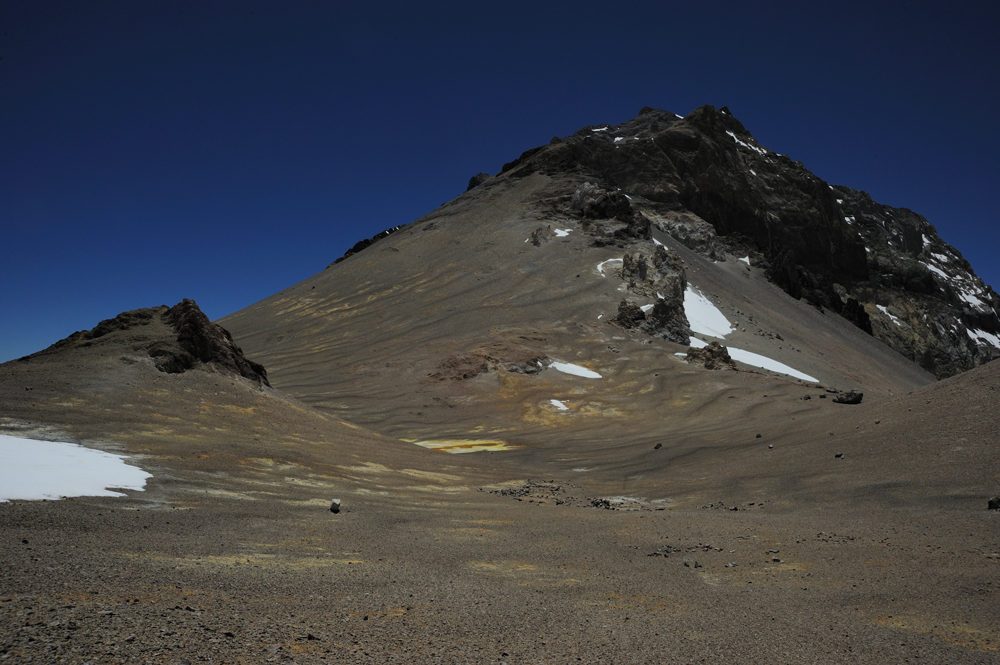
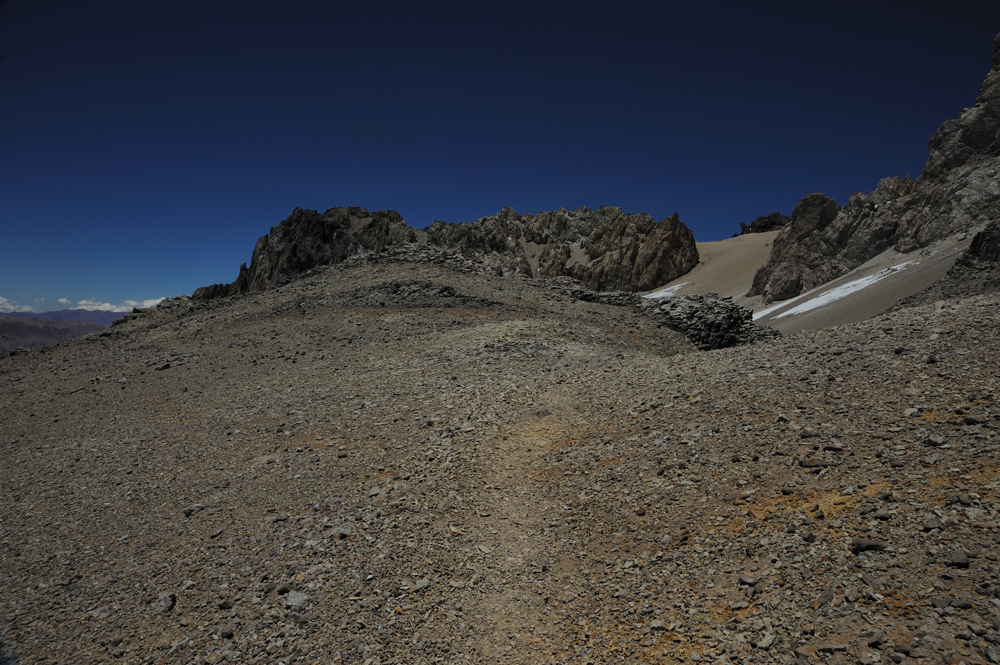
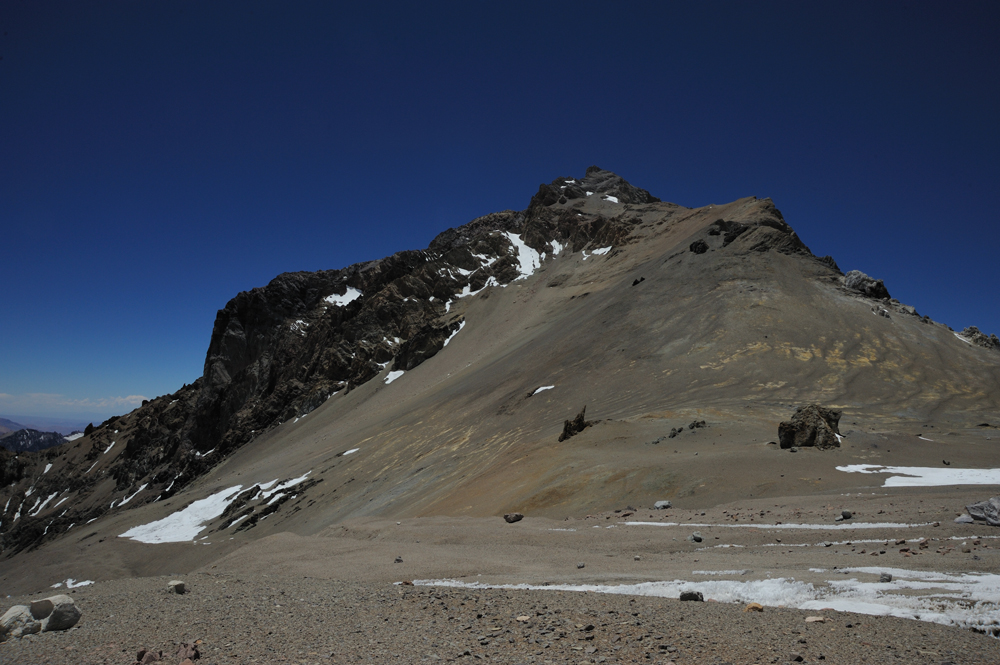
The mountains on the other side of the pass.
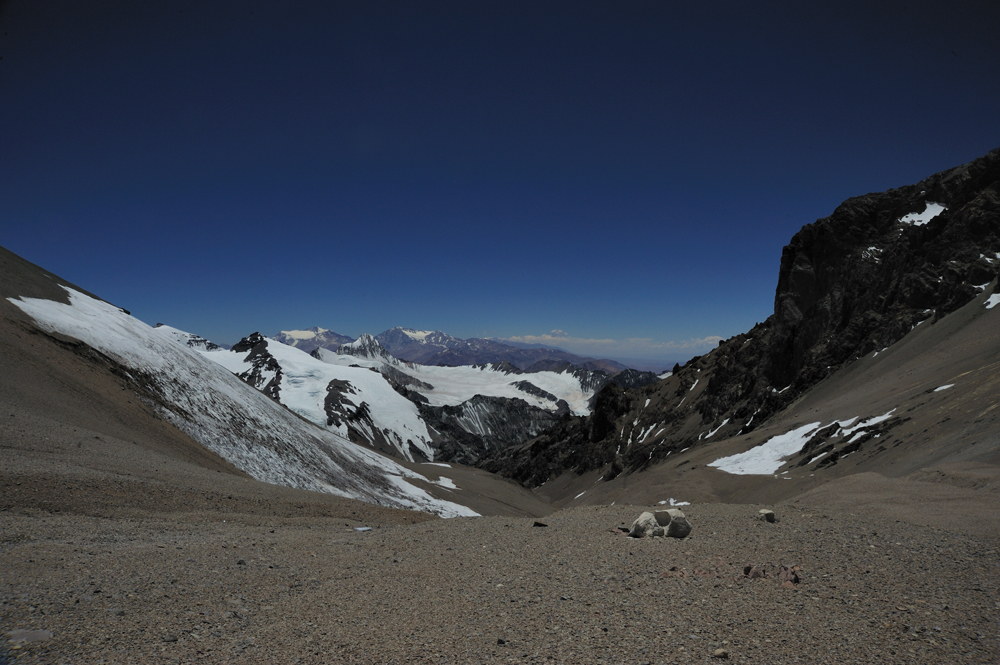
Next part – traves with a little elevation gain on the north-east slope.
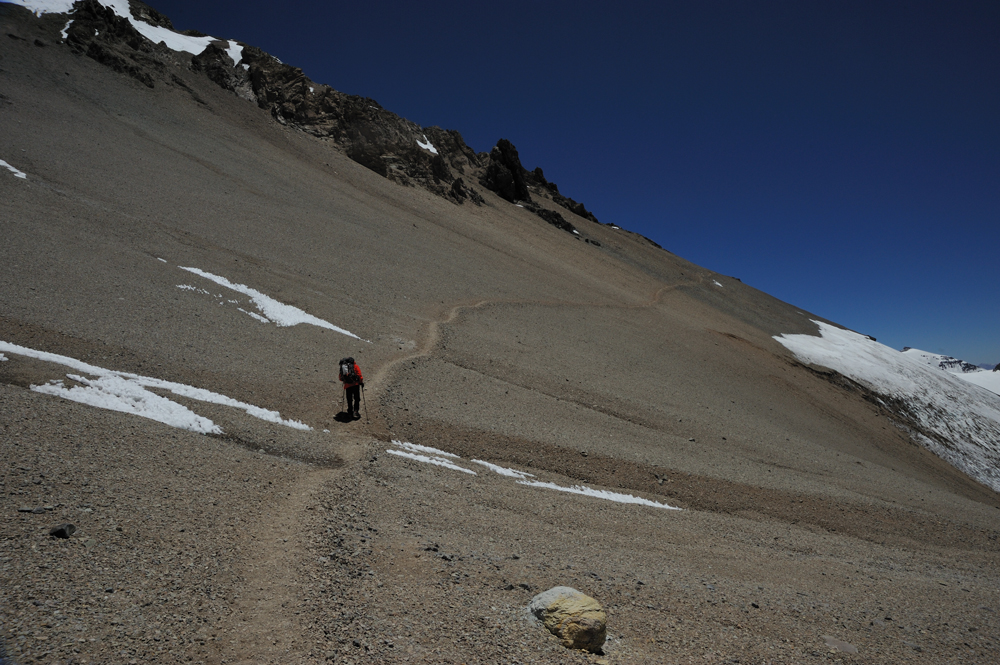
The summit.
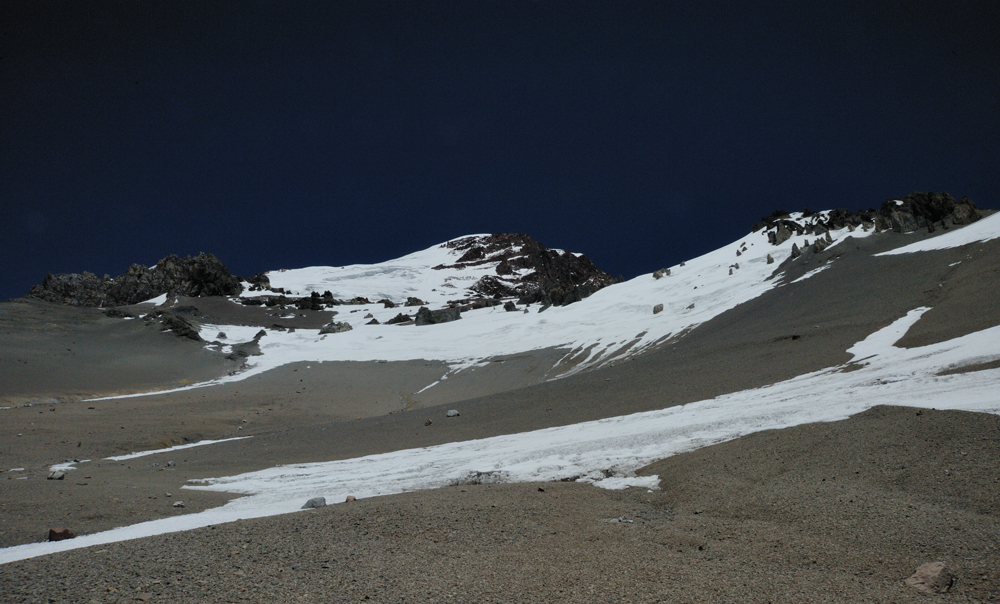
Mover a little bit from the pass.
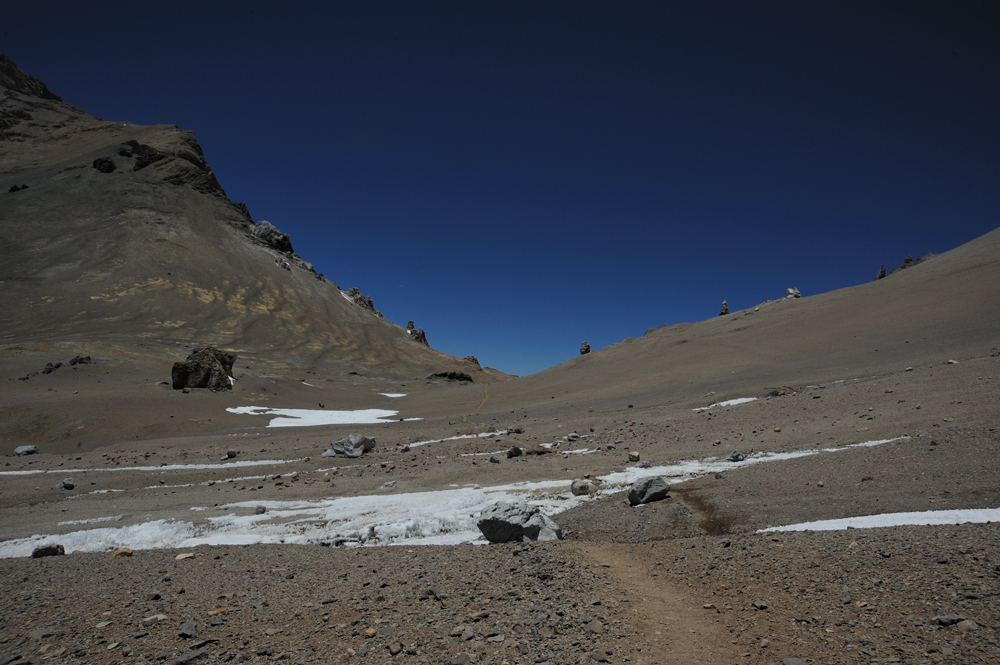
Snowfields.
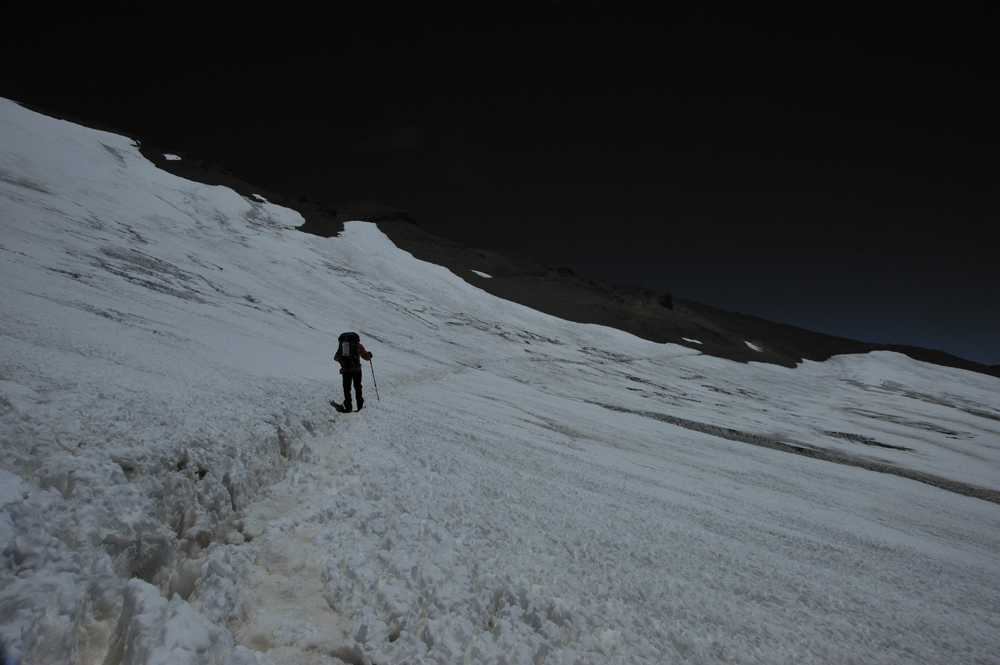
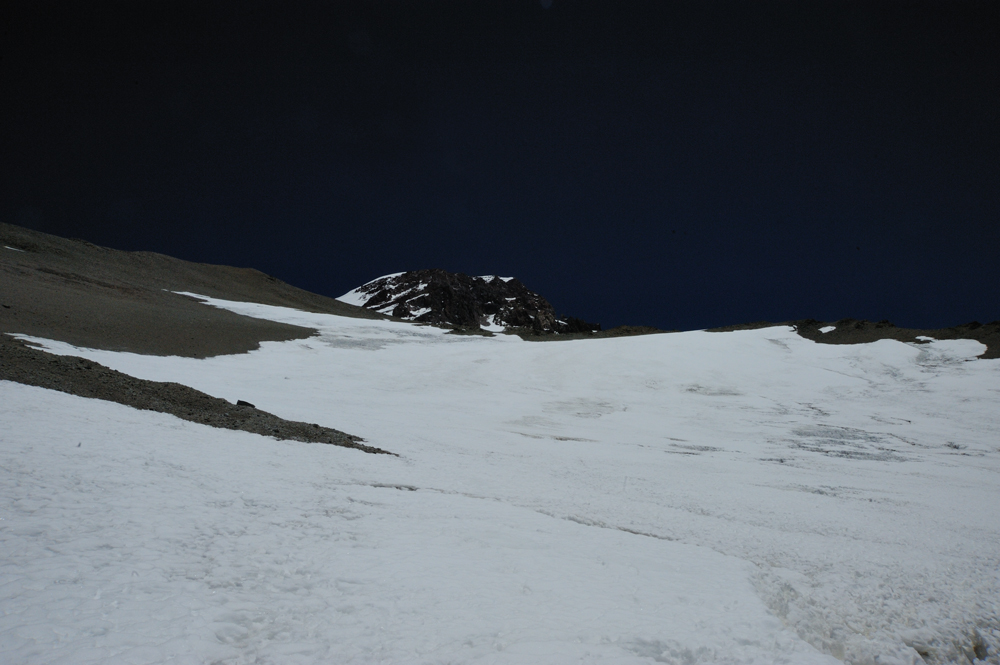
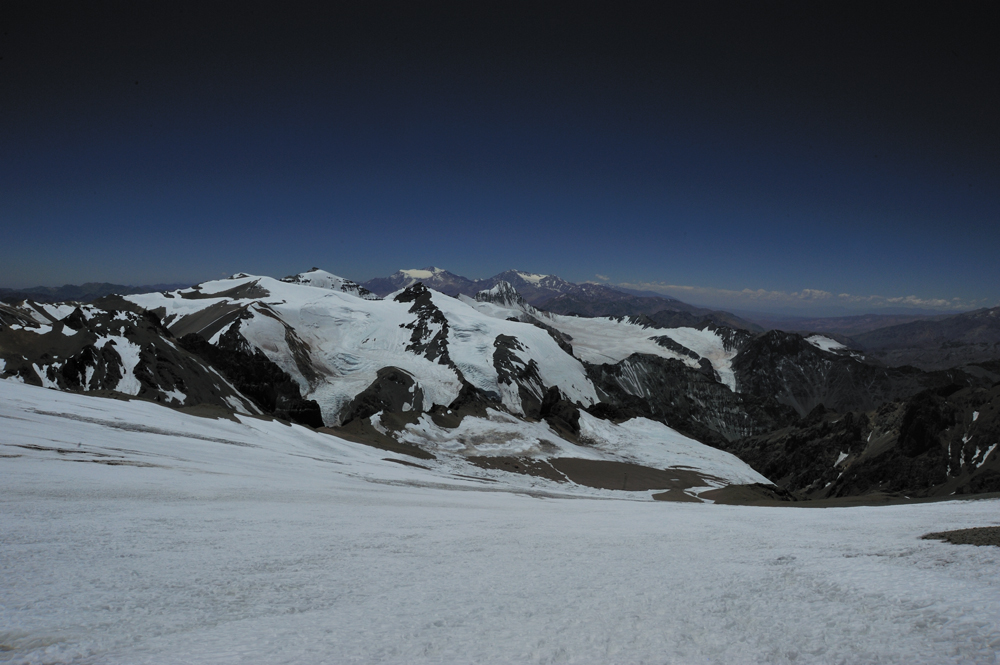
I cannot pass this by photographs, however, the Andes impress by their calibre. They are huge, spacious, majestic and beautiful. They exist for admiration. I definitely want to come back here.
The views around were majestic, but the wind was unfriendly. It was so strong and cold, that we put on all clothes that we had with us, but it was not enough.
Came closer to Guanaco camp.
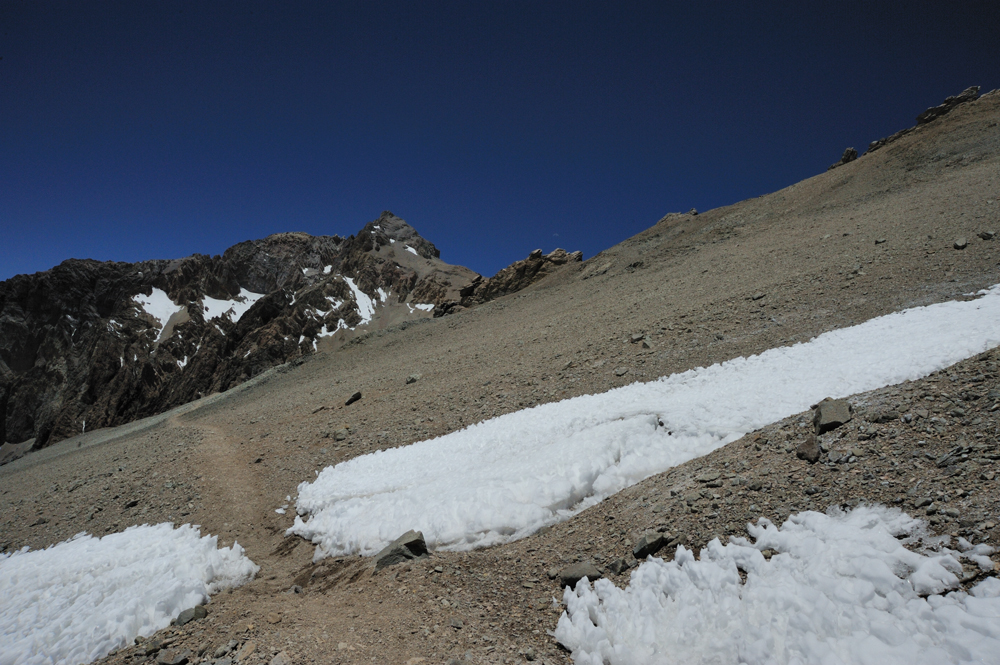
The summit and the moon above it.
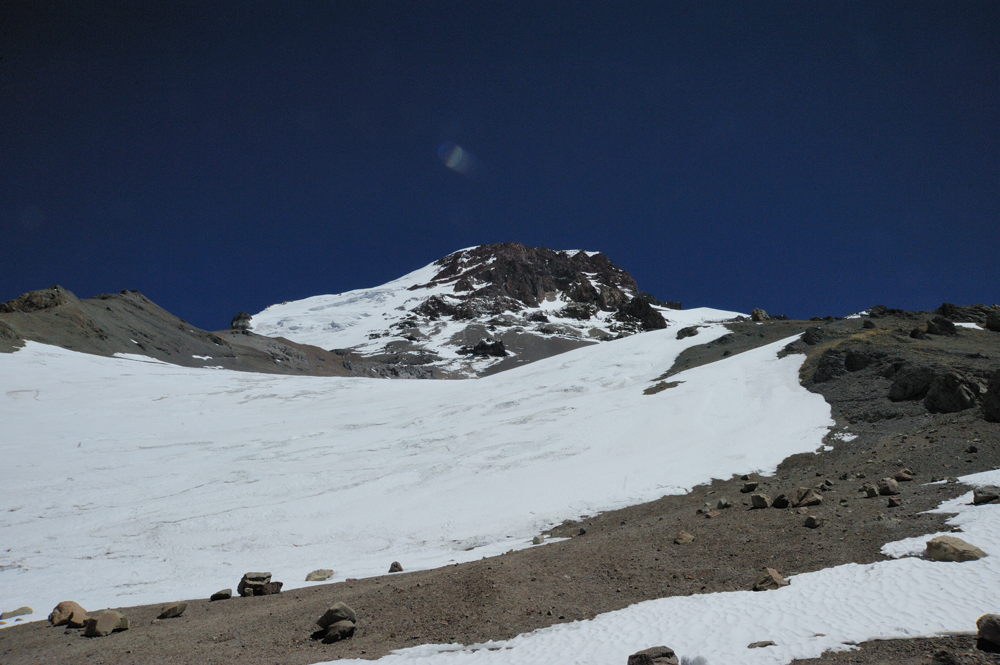
There is only one group in Guanaco camp right now, plus some cargo of other groups.
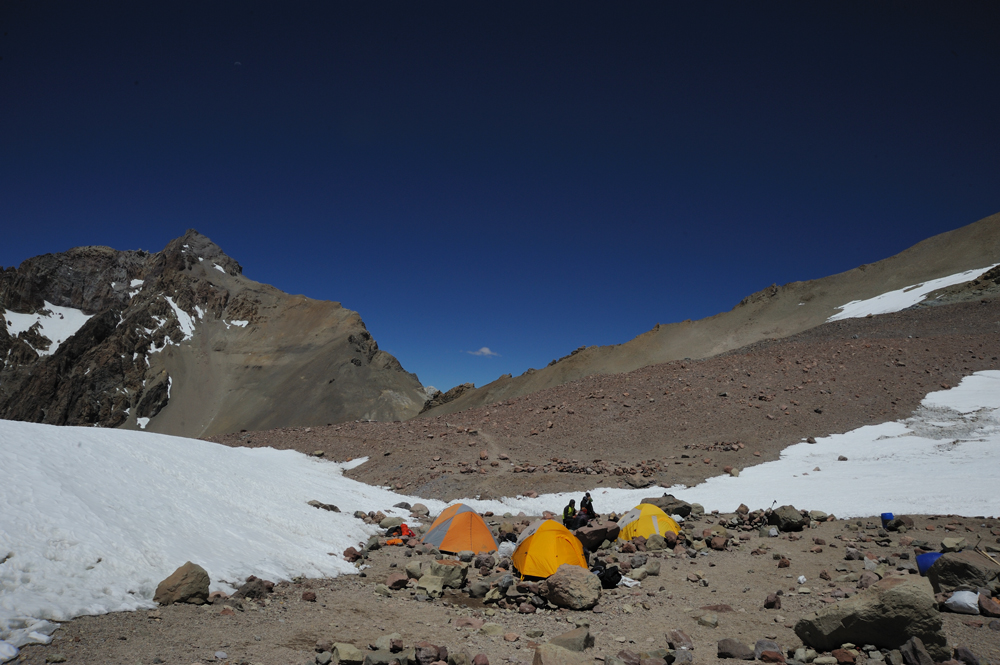
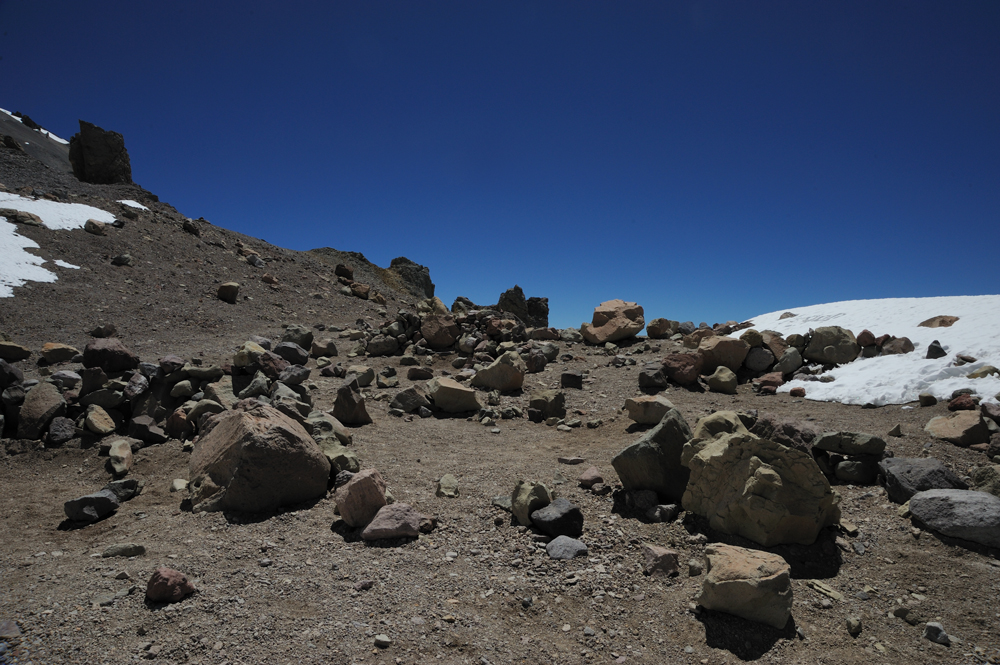
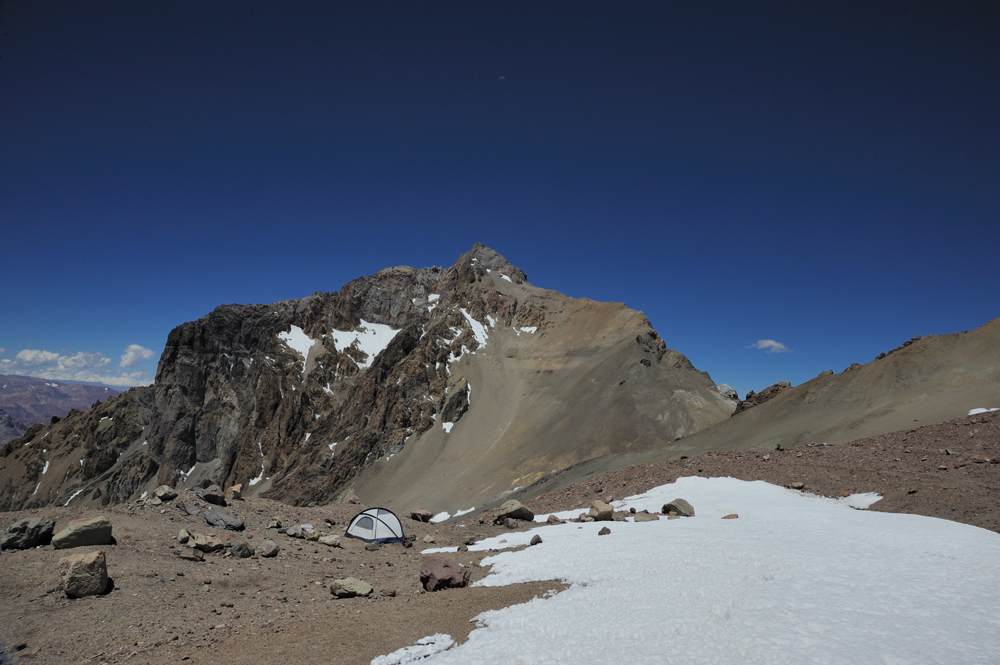
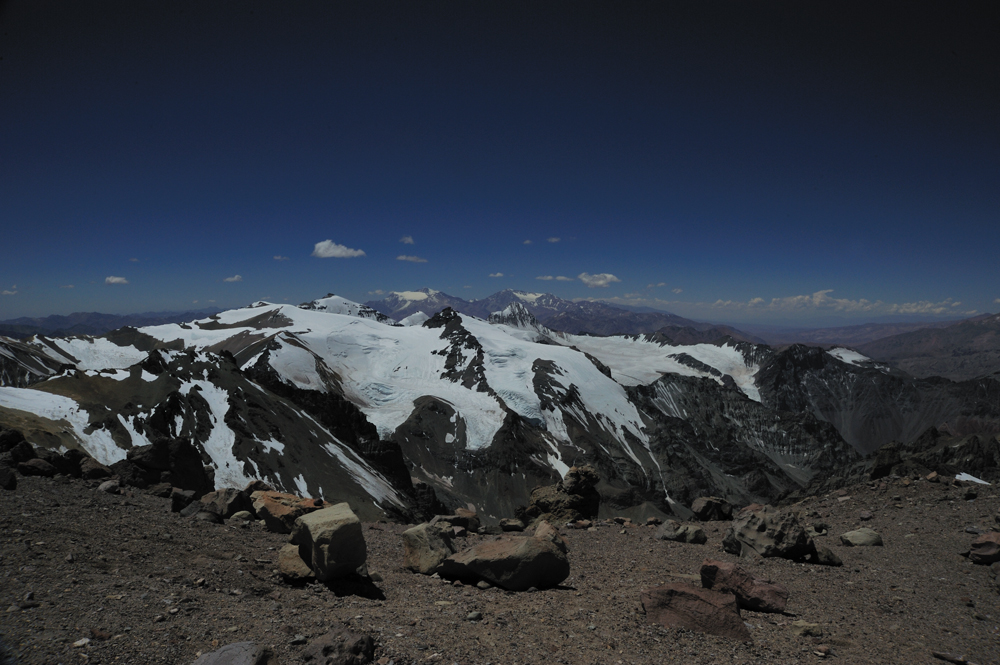
Hide from the wind behind the rock, eat some oranges and go down to camp One for rest and warming.
The way back to the pass.
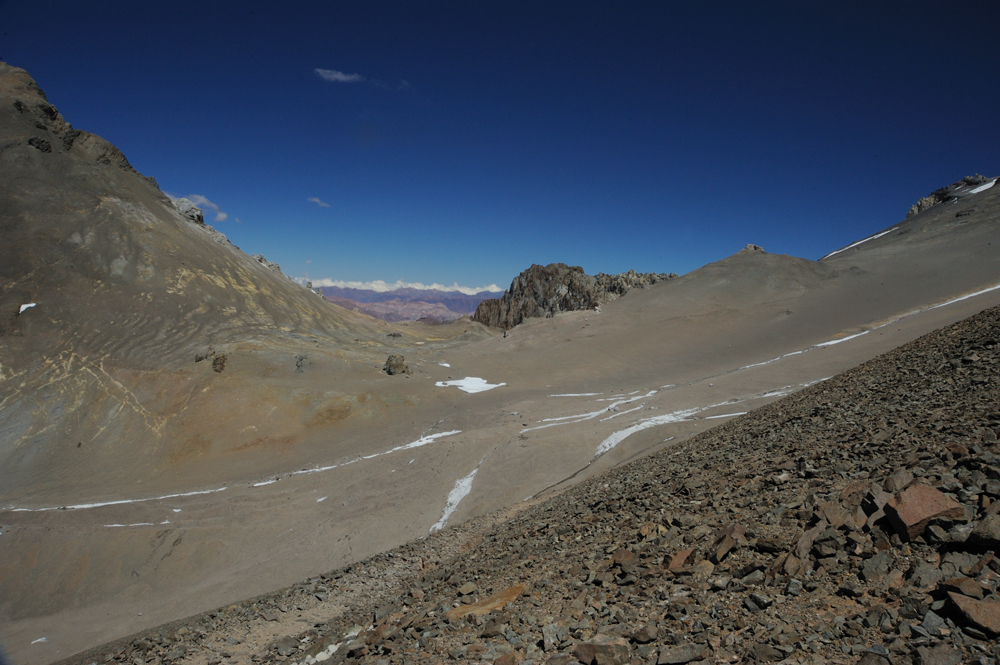
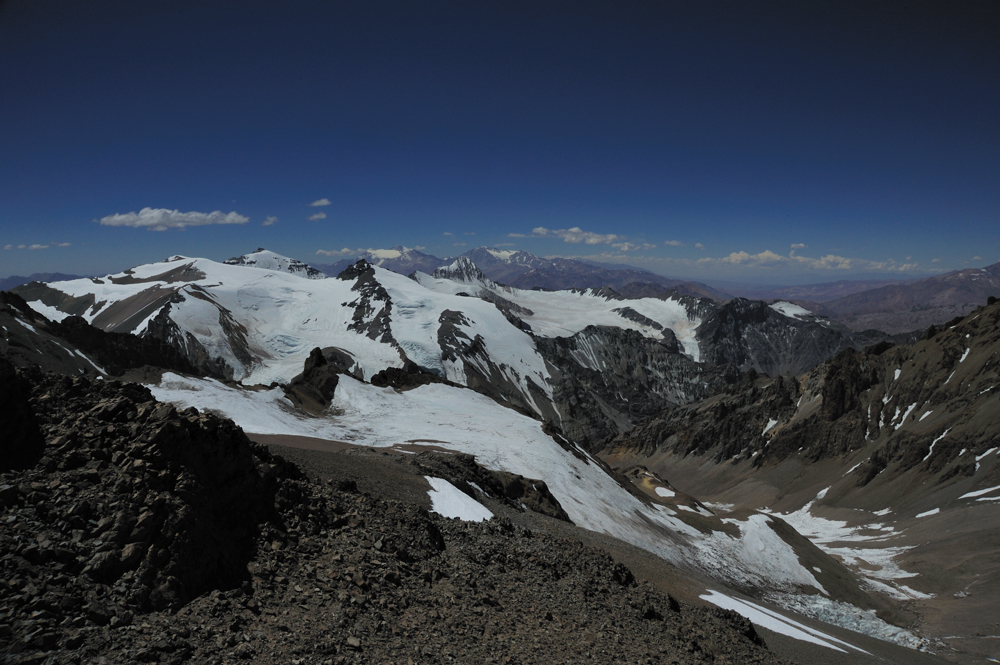
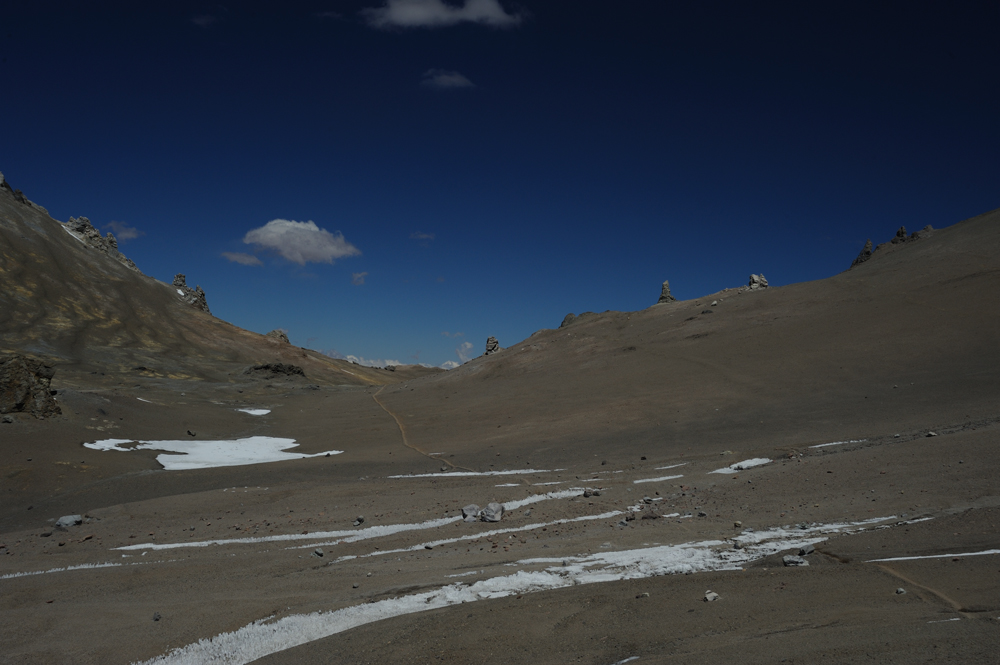
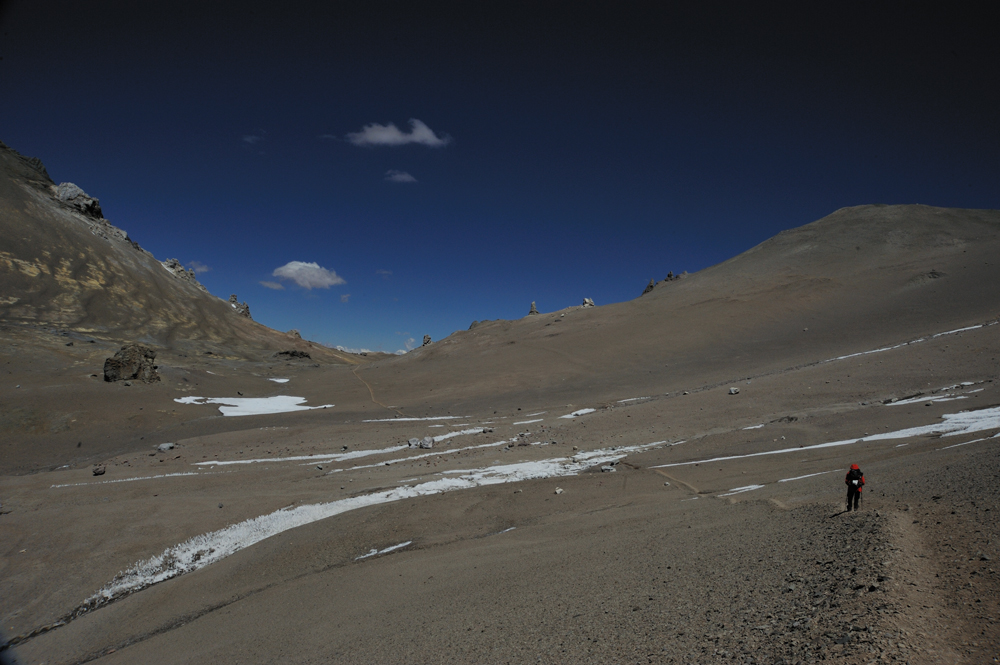
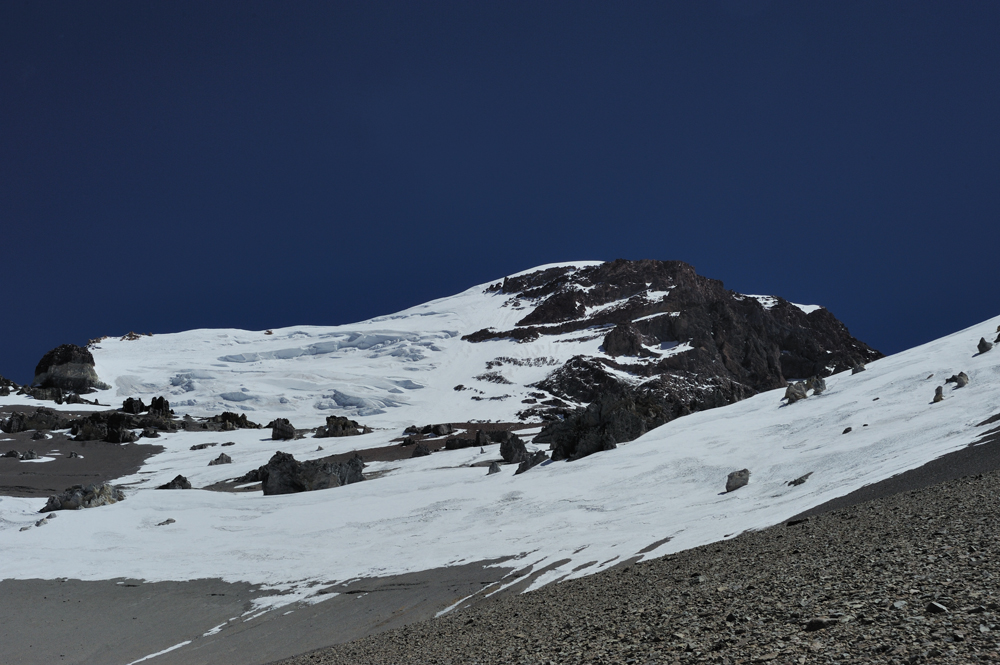
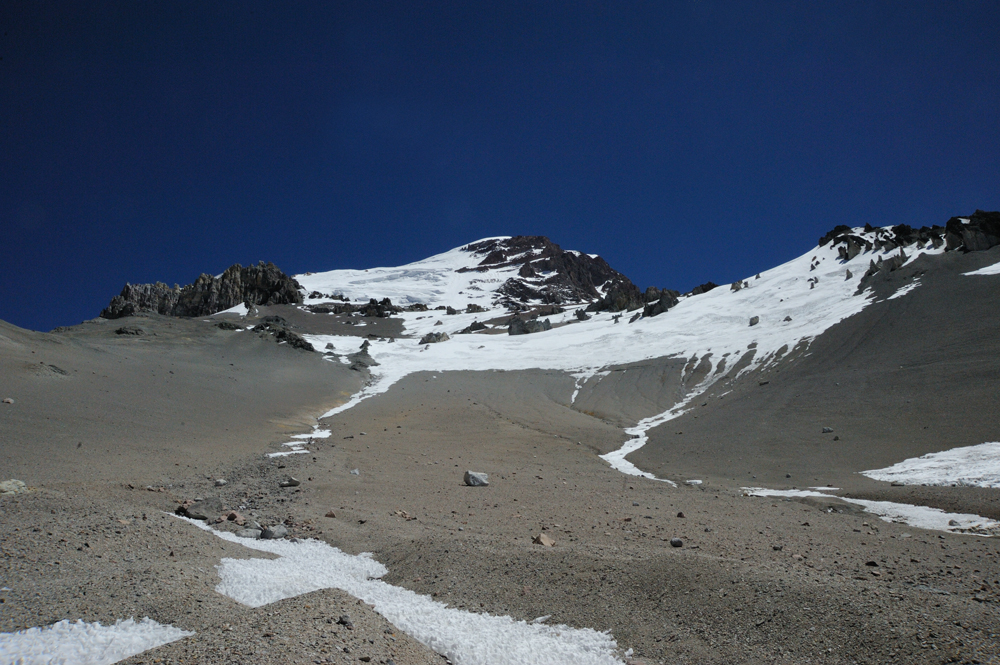
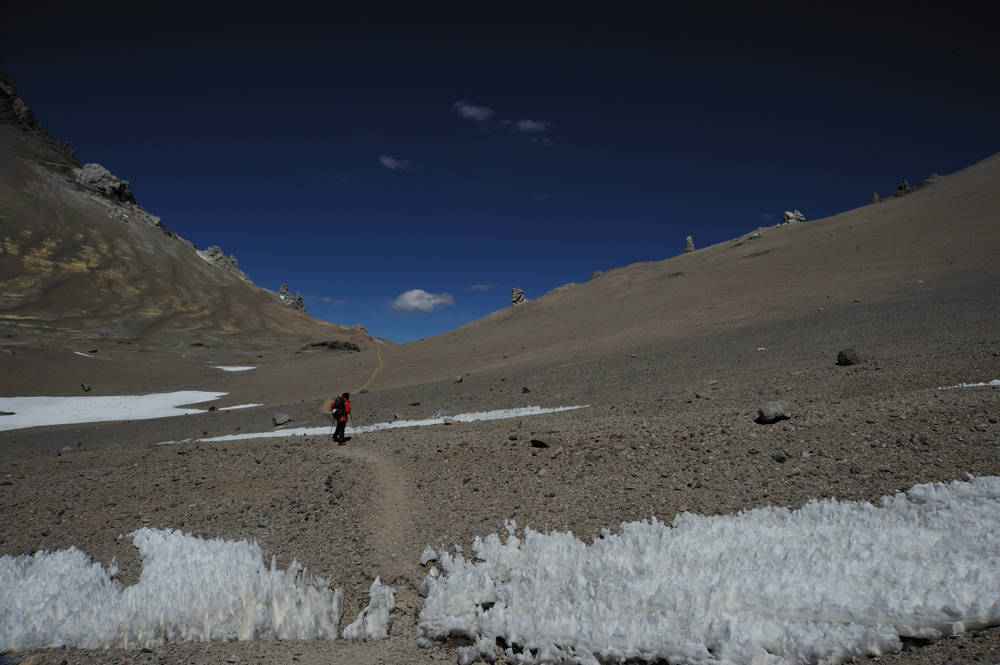
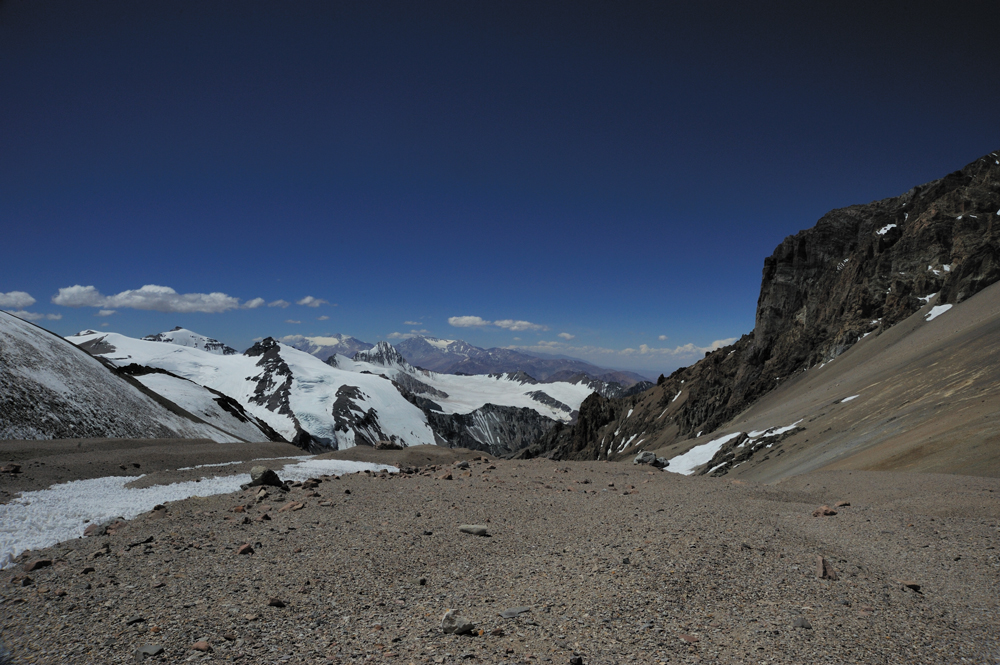
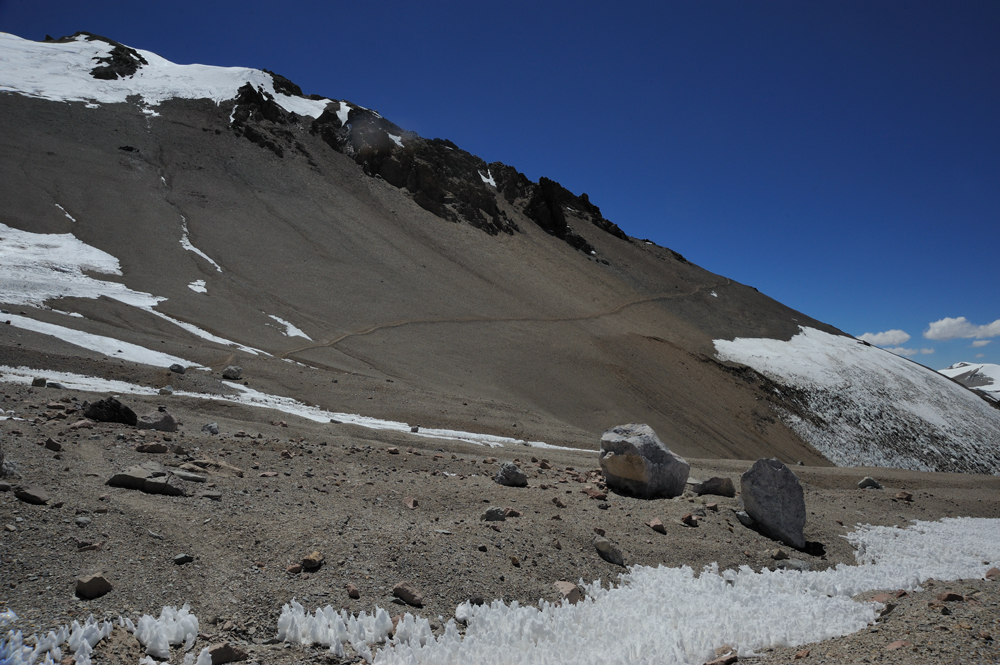
The descent to the Camp One.
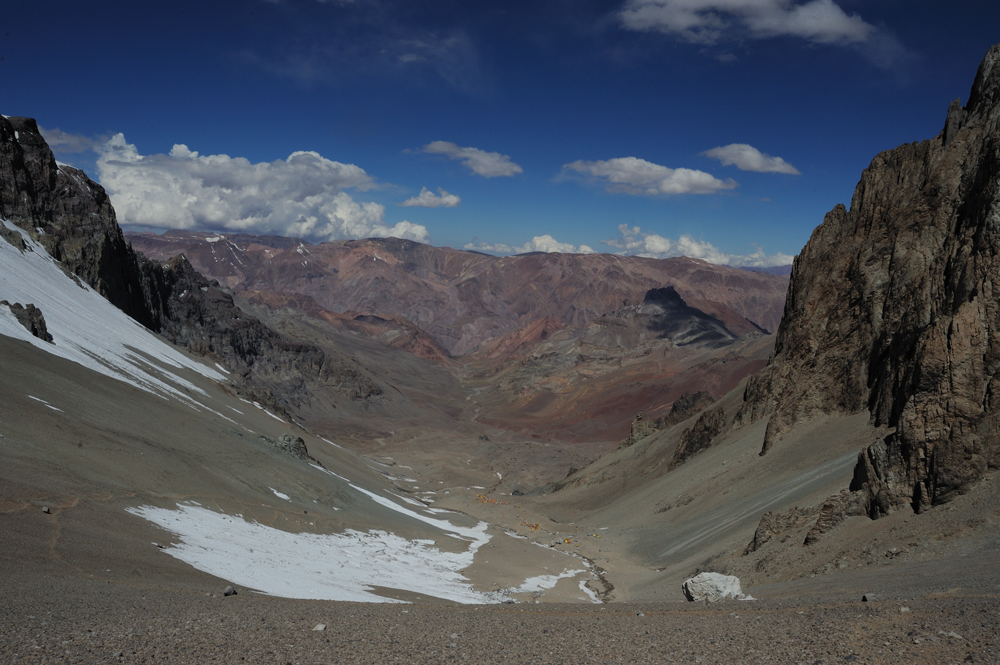
While we hiked to the Guanaco camp, from Plaza Argentine to Camp One a lot of people came and covered the place with tents.
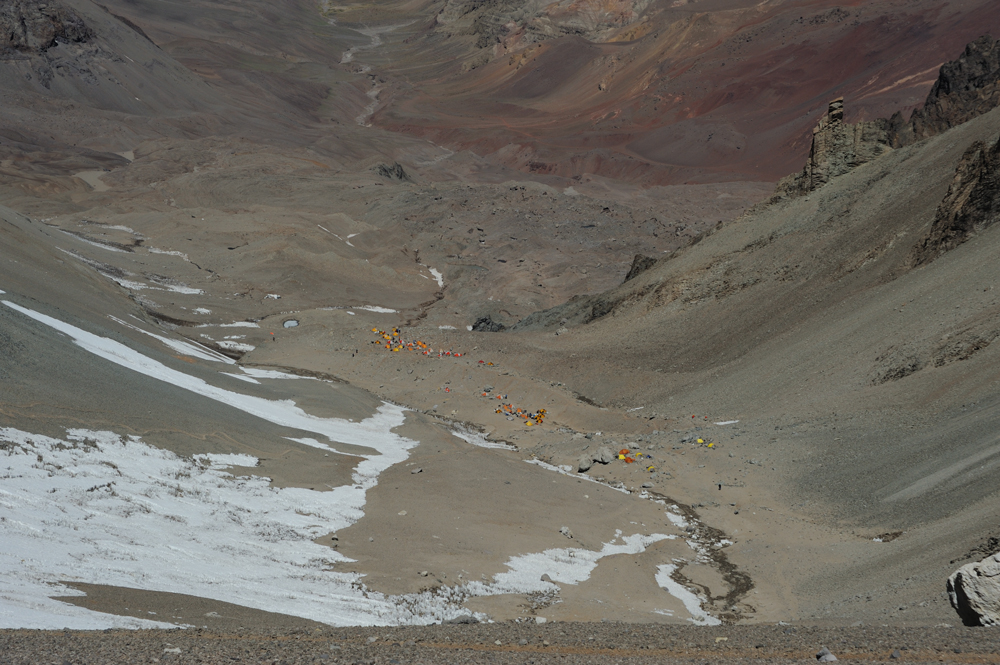
My organism still has a very special idea about appetite at high altitude. We consumed the pack of lyophilized meal each and had some sausage as a dessert.
December 26
Today we are moving to Guanaco camp.
Despite tradition, it was very windy during the night, but relatively warm.
We packed, had breakfast and started our way up.
It was very windy and very cold. I added down vest to the rest of the clothes and still was not warn even under my backpack.
Guanaco was already full. Some places were still available, but not too many choices. Our cargo was removed from the place that we chose, so we moved on one that was available yet. Removing somebody cargo is not customary here if other places are available, and local guides nether behave in such a way. It was an American company with a guide from Seattle, and they are practice such tactless behaviour with “strangers” (everybody who is not their client) on a mountain. (The guide name is John Michael Gorum, he is from company Rainier Mountaineering Inc., aka RMI).
In general, local guides made me happy, especially in contrast with the American ones. Well, I shouldn’t generalize, in contrast with guides from Rainier, I never met others in representative quantity. I don’t talk now about their behaviour with their clients (I have no idea about this, and, actually, I believe all guides nanny their clients because their tips depend on it), but about their behaviour with independent mountaineers. I climbed Rainier many times and pretty often met commercial groups on the trail (about two-thig of Rainier climber do it with guides). Very often they behave very roughly as if we climbing their own mountain without payment to their pocket.
Local guides on Aconcagua always were very respectful and kind. They always saluted and were ready to share fresh information about weather (they have regular contact with base camps), discuss rout details and stuff like this. At any problems, they would contact with rangers for you (they all have the radio) and help somehow.
And they always give away on the trail. There is a lex non scripta among mountaineers – one who goes down give away to ones who goes up. Guides on Rainier never follow this rule, at least from my experience. On Aconcagua, they always follow this rule, and if you try to give away for their group, they remind you that way is yours.
Let’s come back to Guanaco Camp. In the afternoon clouds covered the sun, that didn’t make the life warmer. As soon as the sun disappears, the temperature drops below zero. 5500 metres altitude feels not only as an oxygen level.
The idea was to take a rest day on December 27 and try the summit on December 30 (two additional days are required to cargo drop and relocation to assault camp). By this way, we give more time for acclimatization, have rest, and do the summit in my Birthday (why we are going to the mountain? celebrate my Birthday, of course!). However, fresh weather forecast pushed us to change our plans. The closest good day for the summit – December 29. The storm was promised for December 30 and 31. January 1 looked fine, but for six days the forecast can change (and it did change, it was awful wind on January 1st). Also, it is not good to wait three days on such altitude, so we decided to skip the rest day and tried the summit on December 29. So, tomorrow plan is cargo drop to Colera camp.
Today we finally solved the mystery of white gas that is sold by guide companies. They dilute it with donkey urine. No, with mule urine. Well, it is a joke, but only partly. It is not a fraud, they use the same gas. However, people who used to buy white gas (bencina blanca in Spanish) for gas burners in REI and other outdoor stores, should remember about this.
Usually, we use Jetboil on our outdoor trips. It is an absolutely perfect thing, that boils water quick as though, switched on/off with single lever movement and can be used in the tent safely. However, there is an opinion that white gas burner works better and low temperature and high altitude. Well, everything loss effectivity when temperature decrease and altitude increase, but possibly white gas loses it more slowly. Actually, later we have found that at least up to 6000 meters and at moderate-low temperature propane-butane mix good as well. Among white gas burners, the Primus is considered as the best one. It can use any kind of fuel – gas, gasoline, diesel and even vegetable oil. Of course, with different efficiency. For different substances, it needs different nozzles. It is sold with three of them in the package – for gas, for white gas, and for heave dirty substance like diesel. However, usage of Primus requires much more movements than a Jetboil (especially than you use fuel other than gas). Just before our South-American expedition, we bought the Primus and checked it with white gas from REI. It worked perfectly. Of course, we couldn’t take gas with us on the plane, so we bought a couple of bottles from the same company we used for mule rent. Their guides used the same white gas. We used it on our way to the base camp, the Primus didn’t work the same good way as at home, but still OK, so we blamed the altitude (at home we chacked on sea level). However, when we tried to melt ice on the Guanaco Camp (5500 metres) it took about an hour, that sucks. We changed nozzle for one for most dirty fuel and it works! Of course, it used twice much fuel with this nozzle, but it works.
So, it is not worth always belied in the statements on the bottles.